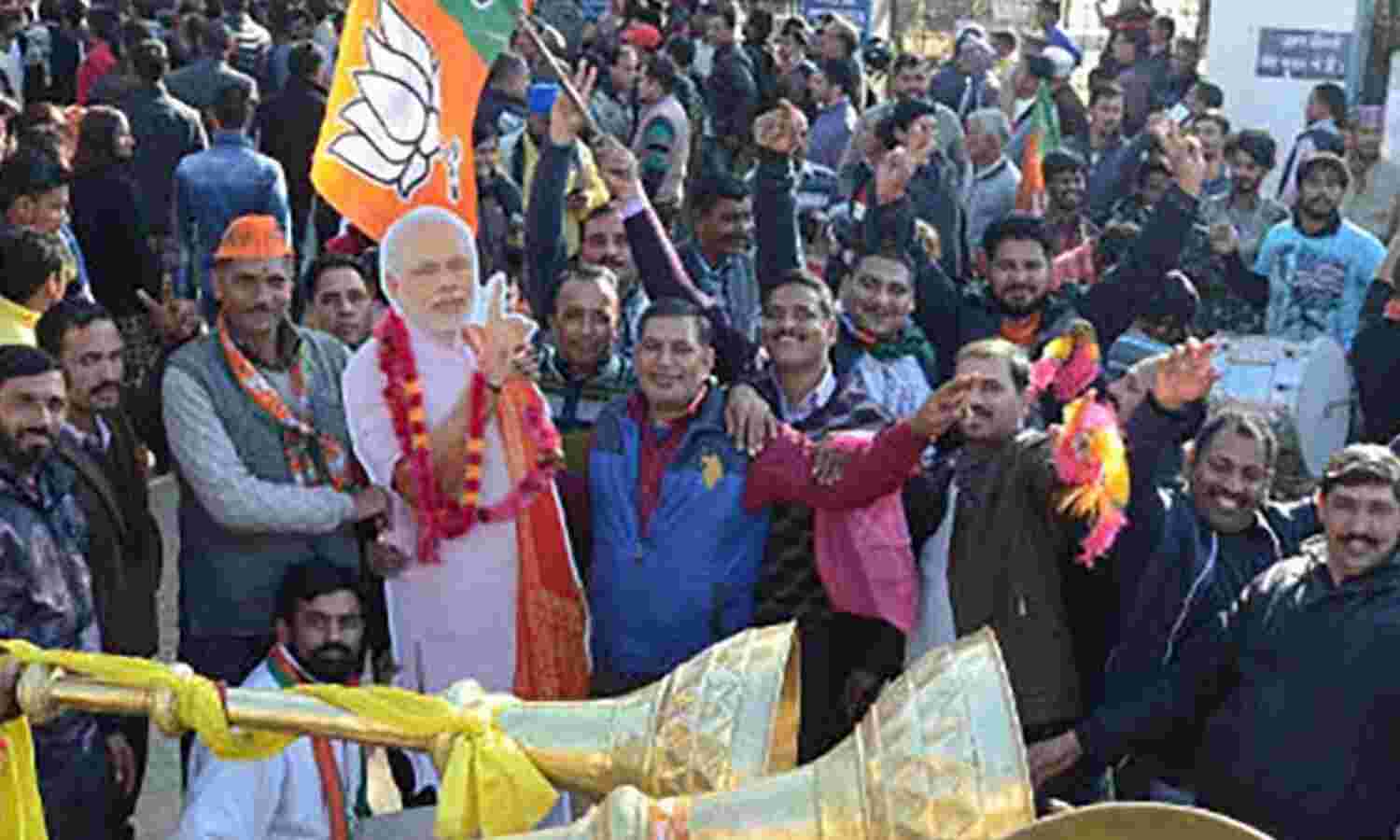BJP Wins 44/68 Seats In Himachal Pradesh, Best Vote Share Ever, Up 10% Over 2012

The Bharatiya Janata Party (BJP) won 44 of 68 assembly seats in Himachal Pradesh with a vote share of 48.8%, up from 38.47% in 2012. This is the best ever performance by the BJP in terms of vote share since it first contested elections in the state in 1982. The Congress won 21 of 68 seats with a vote share of 41.7%, down from 42.81% in 2012. Himachal Pradesh, the tiny hill state located in north India with a population of 6.8 million, is expected grow at 6.8% in the current financial year, according to Economic Survey 2016-17. Himachal has low infant mortality ratio (28 deaths per 1,000 live births; national average 37), better sex ratio (1,078 females per 1,000 males; national average 991), and lower crime rate against women (35.2 crimes per 100,000 population; national average 55.2). The state recorded the highest voter turnout (74.61%) for its assembly elections, held on November 9, 2017, breaking its previous record (74.51%) set in 2003. As many as 338 candidates contested the 2017 assembly elections in Himachal of which only 5% (19) were women candidates. BJP records best-ever vote share BJP’s vote share in the 2017 assembly elections is the best ever, and up 10 percentage points over 2012. In terms of seats, this is the second best performance, winning 44 of 68 seats, compared to 46/68 in 1990.
Source: Election Commission
Congress has been able to maintain its vote share with only a marginal drop to 41.7% in 2017, from 42.81% in 2012. Constituencies that mattered In Shimla, BJP's Suresh Bhardwaj retained his seat, winning with a margin of 1,903 votes against Harish Janartha, an independent candidate. Shimla is the state capital, and also the smallest constituency, area-wise. BJP’s chief ministerial candidate Prem Kumar Dhumal, contesting from Sujanpur, lost by 1,919 votes to Congress’s Rajinder Rana. Chief minister Virbhadra Singh won from Arki with a margin of 6,051 votes against BJP’s Rattan Singh Pal. The seat was earlier held by BJP’s Govind Ram Sharma. Vikramaditya Singh of Congress, son of Virbhadra Singh, won the the Shimla rural constituency seat with a margin of 4,880 votes against BJP’s Pramod Sharma. Virbhadra Singh had won this seat in 2012 by a margin of 20,000 votes. Dharamshala -- the state’s winter capital -- saw the most number (12) of candidates in the state. Congress’s Sudhir Sharma, minister of urban development, lost to BJP’s Kishan Kapoor by 2,997 votes. Anil Sharma, former rural development minister in the Virbhadra Singh cabinet, contested for BJP from Mandi, and won by 10,257 votes against Champa Thakur of Congress. In 2012, Sharma had contested for the Congress and won by a margin of 3,930 votes. Mandi is the only constituency that had more than one women candidate (2) contesting. Congress’s Ravi Thakur lost the Lahaul and Spiti constituency seat to BJP’s Ram Lal Markanda by 1,478 votes. Lahaul and Spiti, a reserved constituency for scheduled tribes, is the largest assembly constituency in terms of area but the smallest in terms of electorate representation. BJP’s Vipin Singh Parmar won the Sullah seat -- the largest assembly constituency electorate-wise -- against Congress’s Jagjiwan Paul by 10,291 votes. Paul had won this seat in 2012 by 4,428 votes. With the win in Himachal Pradesh and retaining power in Gujarat, BJP is now in power in 19 of 29 states. (Mallapur is an analyst with IndiaSpend.) We welcome feedback. Please write to respond@indiaspend.org. We reserve the right to edit responses for language and grammar.Next Story


